This had devastating consequences on the population in these villages, but the disaster did not end with the end of the war. For the small number of people who survived the war, followed many years of struggle with the infectious diseases, hunger and poverty.
After the war, the houses had to be renewed again, the cattle was lost and there was no money to buy a new one. Trenches and bunkers were everywhere, the forests were burned, the fields destroyed and had to be adapted again to be usable for agriculture. There were numerous graves on the locations of fields and gardens and many of them had to be relocated, for the land to be usable again.
The war also left a large quantity of war materials like grenades, bullets, rifles, helmets, barbed wire, metal covers... The government made several attempts to clean it up, but yet, even today, 100 years later, after some heavy rain many remnants can be found.
Unexploded bombs - WW1 legacy on the Macedonian Front – Clearing the terrain around Bitola and Mariovo (period of photo after WW2)
There is a cave near village Gradesnica, which according to the stories of the local population was used by the certain person which collected the war remnants as scrap metal. Namely, he sometimes also collected un-exploaded grenades, which he placed in this cave and around them lit а fire.
Kilometers away people would hear the explosions, and he (the person outside the cave) would count them with great caution. When he was sure that all grenades exploded and that is safe to go inside, he would go in to collect the metals bounced inside the cave, which later were sold as scrap metal. Normally people today would ask why he would go in such a risk, but according to the stories of the local population, those were difficult times and collection of scrap metal was one of the few sources of income for the local population.

Unexploded ordnance - WW1 legacy on the Macedonian Front – Clearing the terrain around Bitola and Mariovo (period of photo after WW2)
Some of the war remains were bought as part of these actions organized by the government, but some leftovers like helmets, barbwire, knifes, metal covers... were kept by the local population and used in their homes.
Helmets for example were used as pots for feeding the cattle and pigs, and even as toddler pots for the babies. The barbwire and metal parts of the rifles were used for fencing the estates, empty shells from grenades were used for grinding pepper, iron plates for the roofs, etc. This is the main reason why today in the villages in Mariovo region can be seen so many First World War remains.
But many grenades and bullets are still lying underground on the locations where they were fired but didn't exploded, or were left in the trenches, storage's or battlegrounds. Aldo 100 years have past, they usually become visible if someone dig's them out, or after heavy rains. In many houses in Mariovo, can be seen collections of bullets, grenades (exploded or not).., people collect them for 100 years, and still find more.
Luckily there were no accidents lately, but maybe this is due to the fact that Mariovo region is sparsely populated, mainly with older population, which takes weapons very seriously and doesn't play with it. But this was not a case during the past. There are many stories about curious boys playing with bullets and grenades, which ended sadly.
Unexploded ordnance - WW1 legacy on the Macedonian Front – Clearing the terrain around Bitola (30.VIII.1939)
There is a rule in Mariovo, especially in the areas where the front-line was, to make a camp fire with great precaution. Since there are many leftovers, sometimes even one buried bullet can make big problem. No one knows what is under the ground, and what can the heat do to it.
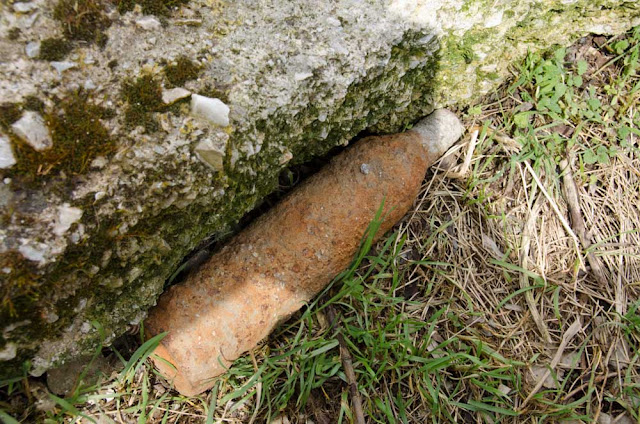
Unexploded bomb (one of many) found near the church St. Dimitrij in village Gradesnica.
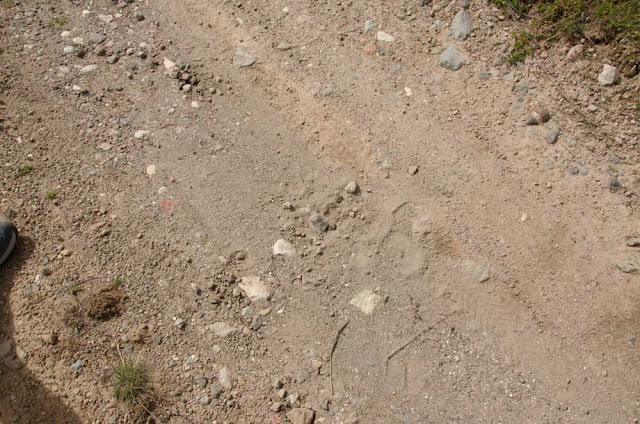
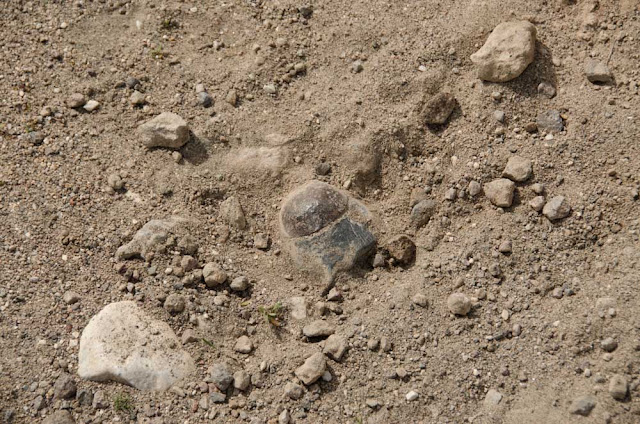
Remnants of war on the road near village Staravina, Mariovo region, Macedonia (The road is mainly used by Jeeps and trucks with timber)
Also during a forest fires, in many areas the fireman do not distinguish the fire directly because of the danger of left over grenades and bullets. This makes serious damage to the forests, and is big problem for the government and the local population.
No one knows what is the quantity of war materials left in the mountains and villages in Mariovo region and if /or when another attempt would be made to clear the terrain.
Yet there are many souvenirs in the houses, which interesting for the visitors, are displayed in small house museums in whole Mariovo region.
Remnants of war in village Gradeshnica, Mariovo
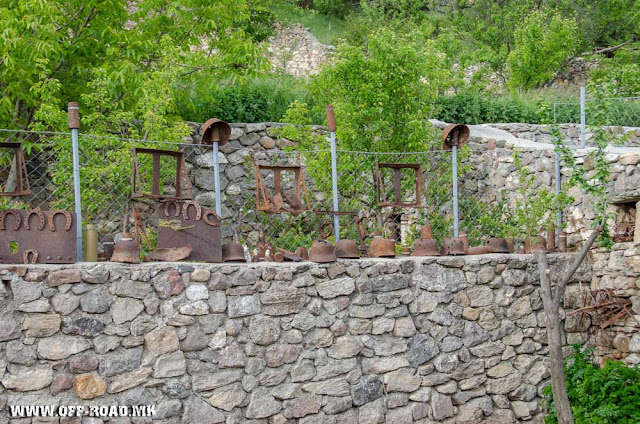
Private WW1 exhibition - Remnants of war in village Gradeshnica, Mariovo
WW1 Tree in village Gradeshnica, Mariovo

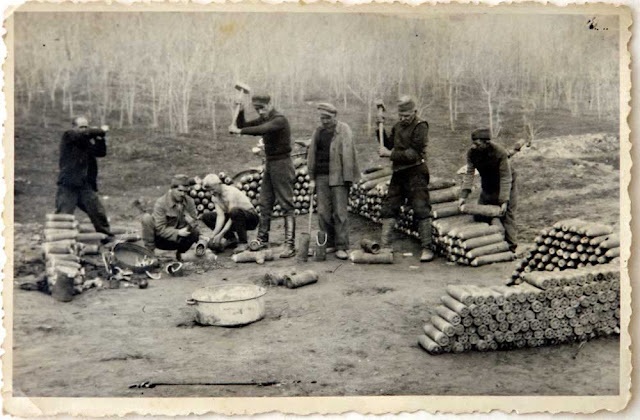
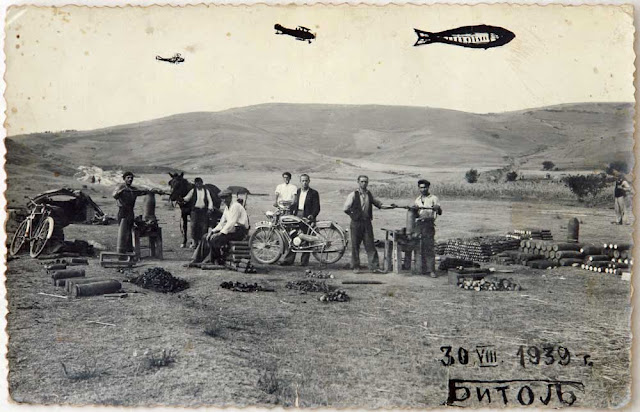
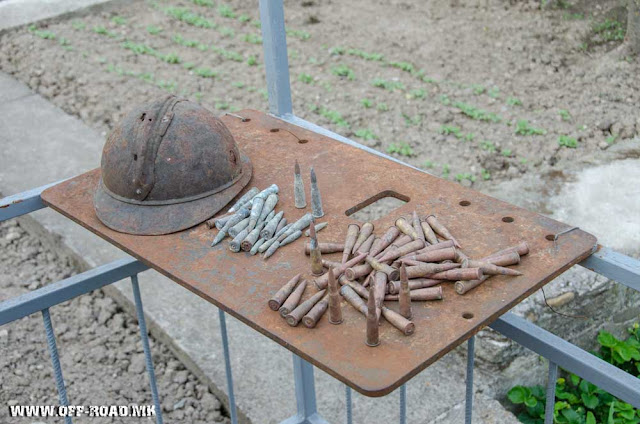
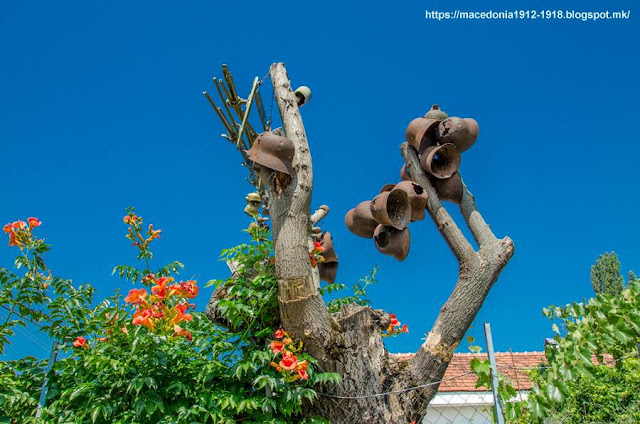




0 Comments